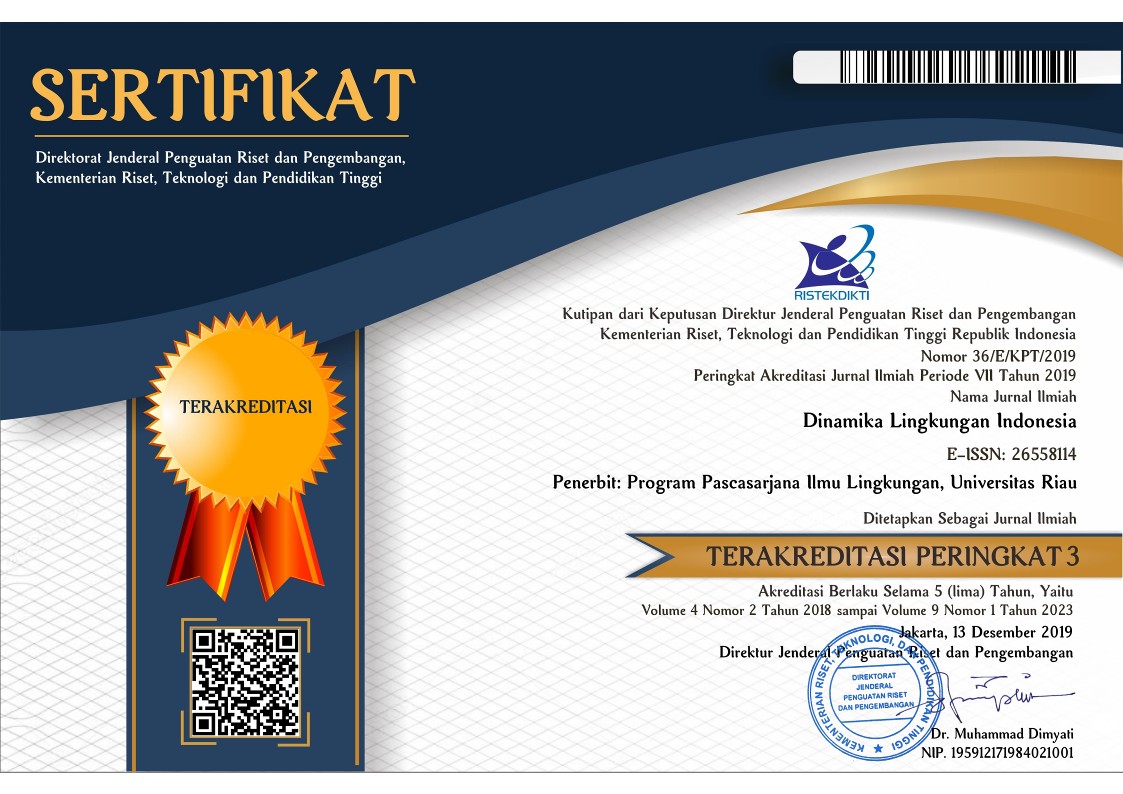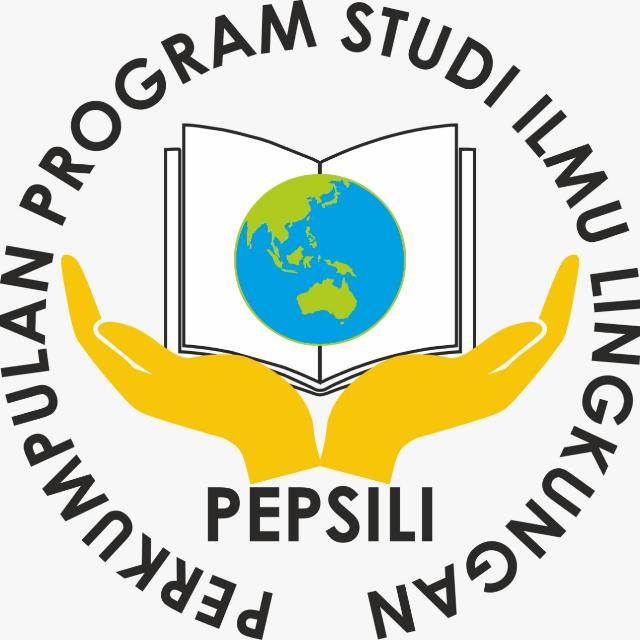Analisis Manfaat Ekonomi Taman Hutan Raya Sultan Syarif Hasyim Pekanbaru
Abstract
Keywords
Full Text:
PDFReferences
Arsyad, S., 1983. Pengawetan Tanah dan Air. Fakultas Pertanian Departemen Ilmu-ilmu Tanah. IPB Bogor.
Badan Standardisasi Nasional. 2011. Pengukuran dan Penghitungan Cadangan Karbon: Pengukuran Lapangan untuk Penaksiran Karbon Hutan. BSN. Jakarta.
Brown, S., 1997. Estimating Biomass and Biomass Change of Tropical Forest: A Primer. FAO Forestry Paper 134. Food and Agriculture Organization. Rome.
Departemen Kehutanan, 2010. Cadangan Karbon pada Berbagai Tipe Hutan dan Jenis Tanaman di Indonesia. Pusat Penelitian dan Pengembangan Perubahan Iklim dan Kebijakan. Bogor.
Hairiah, K., dan S. Rahayu, 2007. Pengukuran Karbon Tersimpan di Berbagai Macam Penggunaan Lahan. World Agroforestry Centre. Bogor.
Ilyas, S., 2013. Carbon Sequestration and Growth of Stand Cassia siamea Lamk. in Coal Mining Reforestation Area. Indian Journal of Science and Technology, 6 (11) : 5405-5410.
Mukhamadun, T. Efrizal, dan S. Tarumun. 2012. Valuasi Ekonomi Hutan Ulayat Buluhcina, Desa Buluhcina, Kecamatan Siak Hulu, Kabupaten Kampar. Jurnal Ilmu Lingkungan, 6 (1) : 16-24.
Nursa’ban, M., 2006. Pengendalian Erosi Tanah Sebagai Upaya Melestarikan Kemampuan Fungsi Lingkungan. Jurnal Geomedia, 4 (2) : 93-116.
Simon, H., 2010. Perencanaan Pembangunan Sumberdaya Hutan: Timber Management. Pustaka Pelajar, Yogyakarta.
Stanley, M. P., G. Gonzales and D. Yin, 2013. Covering New Ground: State of Voluntary Carbon Market. Forest Trends Ecosystem Marketplace, Washington.
Tarumun, S., 2015. Pengantar Ilmu Ekonomi Lingkungan. Buku Ajar. Program Studi Ilmu Lingkungan Program Pascasarjana Universitas Riau, Pekanbaru.
Wischmeier, W. H. dan D. D. Smith, 1978. Predicting Rainfall Erosion Losses: A. Guide to Conservation Planning. US Department of Agriculture, Washington.
World Economic Outlook, 2013. Recovery Strengthens, Remains Uneven. World Economic and Financial Surveys. International Monetary Fund, Washington.
Yamani, A., 2013. Studi Kandungan Karbon pada Hutan Alam Sekunder di Hutan Pendidikan Mandiangin Fakultas Kehutanan UNLAM. Jurnal Hutan Tropis, 1 (1) : 85-91.
DOI: http://dx.doi.org/10.31258/dli.3.2.p.113-121
Refbacks
- There are currently no refbacks.





